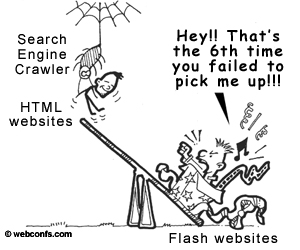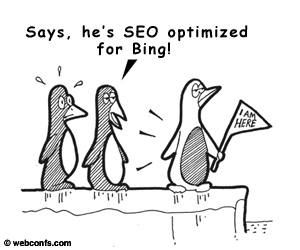I. Introduction – What Is SEO

SEO is a technique which helps search engines find and rank your site higher than the millions of other sites in response to a search query. SEO thus helps you get traffic from search engines.
This SEO tutorial covers all the necessary information you need to know about Search Engine Optimization - what is it, how does it work and differences in the ranking criteria of major search engines.
1. How Search Engines Work

First, search engines crawl the Web to see what is there. This task is performed by a piece of software, called a crawler or a spider (or Googlebot, as is the case with Google). Spiders follow links from one page to another and index everything they find on their way. Having in mind the number of pages on the Web (over 20 billion), it is impossible for a spider to visit a site daily just to see if a new page has appeared or if an existing page has been modified, sometimes crawlers may not end up visiting your site for a month or two.
What you can do is to check what a crawler sees from your site. As already mentioned, crawlers are not humans and they do not see images, Flash movies, JavaScript, frames, password-protected pages and directories, so if you have tons of these on your site, you'd better run the Spider Simulator below to see if these goodies are viewable by the spider. If they are not viewable, they will not be spidered, not indexed, not processed, etc. - in a word they will be non-existent for search engines.
When a search request comes, the search engine processes it – i.e. it compares the search string in the search request with the indexed pages in the database. Since it is likely that more than one page (practically it is millions of pages) contains the search string, the search engine starts calculating the relevancy of each of the pages in its index with the search string.
There are various algorithms to calculate relevancy. Each of these algorithms has different relative weights for common factors like keyword density, links, or metatags. That is why different search engines give different search results pages for the same search string. What is more, it is a known fact that all major search engines, like Yahoo!, Google, Bing, etc. periodically change their algorithms and if you want to keep at the top, you also need to adapt your pages to the latest changes. This is one reason (the other is your competitors) to devote permanent efforts to SEO, if you'd like to be at the top.
The last step in search engines' activity is retrieving the results. Basically, it is nothing more than simply displaying them in the browser – i.e. the endless pages of search results that are sorted from the most relevant to the least relevant sites.
2. Differences Between the Major Search Engines

There are many examples of the differences between search engines. For instance, for Yahoo! and Bing, on-page keyword factors are of primary importance, while for Google links are very, very important. Also, for Google sites are like wine – the older, the better, while Yahoo! generally has no expressed preference towards sites and domains with tradition (i.e. older ones). Thus you might need more time till your site gets mature to be admitted to the top in Google, than in Yahoo!.
No comments:
Post a Comment